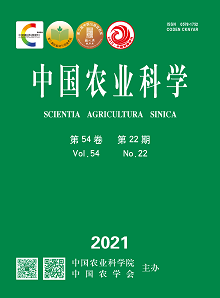【Objective】 This experiment was conducted to determine the effects of dietary supplemental pattern of trace elements on growth performance, carcass traits and meat quality of broiler chicks, so as to provide the experimental basis for the reasonable addition of trace elements to broiler diets.【Method】 A single-factor completely randomized design was adopted in this experiment. A total of 240 one-day-old Arbor Acres (AA) broiler chicks were randomly allotted by body weight to 1 of 5 treatments with 6 replicate cages of 8 birds per cage. The trace elements were added to the corn-soybean basal diet as follows: the inorganic trace elements according to NRC (1994) recommendation for broiler chicks (T1: the added levels of copper (Cu), Iron (Fe), manganese (Mn), zine (Zn) and selenium (Se) were 8, 80, 60, 40 and 0.15 mg·kg-1 during 1-42 days, respectively), the inorganic trace elements according to the recommendation for broiler chicks in Chinese Feeding Standard of Chicken (NY/T 33-2004) (T2: the added levels of Cu, Fe, Mn, Zn and Se were 8, 100, 120, 100 and 0.3 mg·kg-1 for 1-21 days old, respectively; and 8, 80, 120, 80 and 0.3 mg·kg-1 for 22-42 days old, respectively), the inorganic trace elements according to the previous results of trace elements requirements from our lab (T3: the added levels of Cu, Fe, Mn, Zn and Se were 4, 40, 110, 60 and 0.35 mg·kg-1 during 1-21 days, respectively; and 0, 30, 80, 40 and 0.35 mg·kg-1 during 22-42 days, respectively), the decrement levels of organic trace elements according to the previous results of from our lab (T4: the added levels of Cu, Fe, Mn, Zn and Se were 2, 30, 80, 40 and 0.25 mg·kg-1 during 1-21 days, respectively; and 0, 30, 80, 40 and 0.25 mg·kg-1 during 22-42 days, respectively), and the organic trace elements according to the recommendation for broiler chicks in NY/T 33-2004 (T5: the added levels of Cu, Fe, Mn, Zn and Se during 1-21 and 22-42 days were the same as those in T2), respectively. The inorganic trace element sources (feed grade) were Cu sulfate pentahydrate, Fe sulfate monohydrate, Mn sulfate monohydrate, Zn sulphate monohydrate and sodium selenite, and the organic trace element sources (feed grade) were Cu mothionine, Fe glycine, Mn methionine, Zn glycinate and Se yeast, respectively. The experiment lasted for 42 days.【Result】The results showed that those different supplemental patterns of trace elements had no significant effects (P>0.05) on the average daily feed intake and average daily gain. Broilers from T2 had higher (P<0.05) feed to gain ratio during 22-42 days than those from T1, T4 and T5, and no difference was detected between T2 and T3 (P>0.05). Broilers from T2 had higher (P<0.05) feed to gain ratio during 1-42 days than those from other groups, and there were no differences (P>0.05) among other groups. The different supplemental patterns of trace elements had no significant effects on (P>0.05) the carcass traits, L* and a* values, pH values and drip losses of breast and thigh muscles. The breast muscle b* value of broilers from T5 was higher (P<0.05) than that of broilers from T1 and T3, and no difference was observed (P>0.05) between T5 and T4. The shear force of thigh muscle from T4 was lower (P<0.05) than that from T1 or T5, and the muscle tenderness was relatively well. 【Conclusion】Under this experimental conditions, the group with decrement supplement of organic trace elements based on our previous results (T4: the added levels of Cu, Fe, Mn, Zn and Se were 2, 30, 80, 40 and 0.25 mg·kg-1 during 1-21 days, and 0, 30, 80, 40 and 0.25 mg·kg-1 during 22-42 days, respectively) was better than other groups in improving the growth performance and meat quality of broiler chicks.









